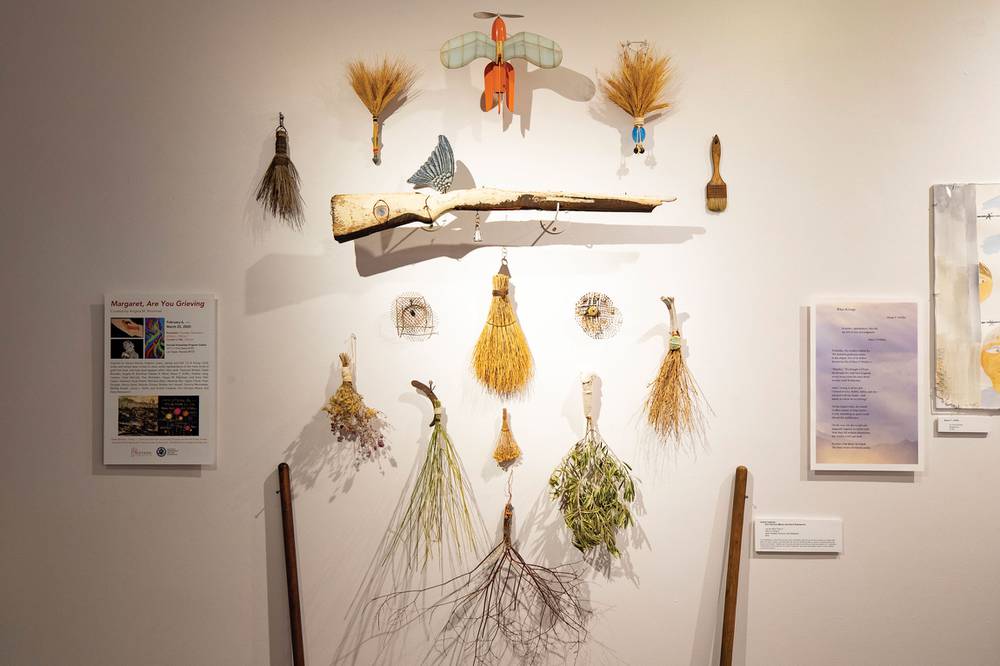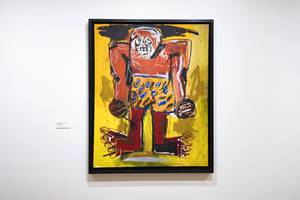
Margaret, Are You Grieving Through May 27. Nevada Humanities Program Gallery, 1017 S. 1st St., bit.ly/38Vr5vS.
Grief, mourning, death, pain—Nevada Humanities Program Gallery tackles taboo subjects in Margaret, Are You Grieving. Curated by Angela M. Brommel, the exhibit includes works by 21 artists expressing loss through poetry, prose, painting, video, sculpture, textiles, photography, installations and mixed media. Online and physical versions of the show will run through May 27, with the gallery hoping to open to visitors again when possible.
Margaret takes its title from Gerard Manley Hopkins’ “Spring and Fall” (1880), an elegy about a child’s intuition of her own death. Given the somber theme, it’s surprising that Margaret has, in the main, a hopeful, life-affirming vibe despite subject matter ranging from a decimated earth to genocide to imprisonment. Avoiding both trauma porn and sentimentality, several of the visual works in the show rely on color and texture to compensate for the bleak terrain of suffering, while the literary works, following Hopkins’ lead, largely rely on stoicism.
Among the standouts is Lance L. Smith’s “44 (‘Forty Fo’),” a mesmerizing oil painting veering away from traditional portraiture into an expressive realm that owes more to the mysteries of identity than to a mere likeness of the painter’s deceased father. Smith’s virtuoso compositional techniques—triangles of light and dark reinforcing focus, adding and removing paint to produce a range of texture—create a ghostly apparition of a man’s face as haunting as it is beautiful. If the dead can speak, then “Forty Fo” does so here.
In contrast to Smith’s subtle rendering, Fawn Douglas’ “Native Lives Matter! Rest in Power Corey Kanosh” is a colorful, strident painting commemorating Corey Kanosh, a Southern Paiute brutally killed by a Utah sheriff. Douglas’ monochromatic portrait of Kanosh in regalia against a questionably bright U.S. flag—with birth/death dates instead of stars and biographical epigrams in the sky stripes—makes an urgent statement for social justice.
Nancy Good also opts for color and vibrancy in “Requiem,” which conveys the emotional depths of grief and recovery via a palimpsest of sinuous lines, prickly hot zones and swirling eddies embodying both pain and process. Myranda Bair takes a more restrained approach, contributing three tender watercolor portraits of tattered stuffed animals on empty ground, the abandoned toys sad surrogates for the extinction of wild creatures. Gemma Marmalade’s “Silent Lecture” video on Brexit-prompted grief, with its eerily attentive students, makes for an ironic political statement about the loss of cultural memory.
Among the many poems included in Margaret are Gayle Brandeis’ touching meditation on the mighty molecular power of her mother’s ashes; Heather Lang-Cassera’s trio of imagistic nature lyrics; Erica Vital-Lazare’s jazzy, life-affirming narrative on family gatherings; and Vogue M. Robinson’s lovely and melodic “duplex” on her grandmother’s passing.
Margaret successfully testifies to a dimension of human experience often bereft of expression. That said, the visual-art-and-writing combo is a challenge for a gallery setting in which numerous, lengthy poems are difficult to absorb. Thanks to the online exhibition, viewers can savor the poems’ nuances and music and contemplate the artworks until Nevada Humanities Gallery is back to business.






